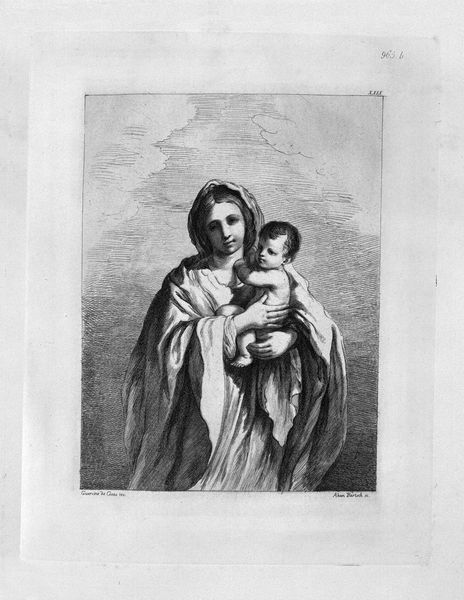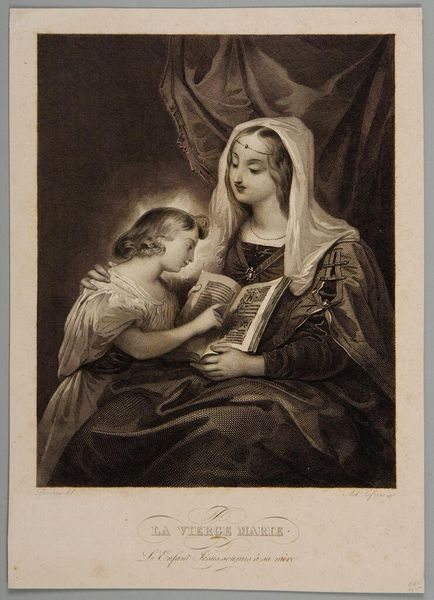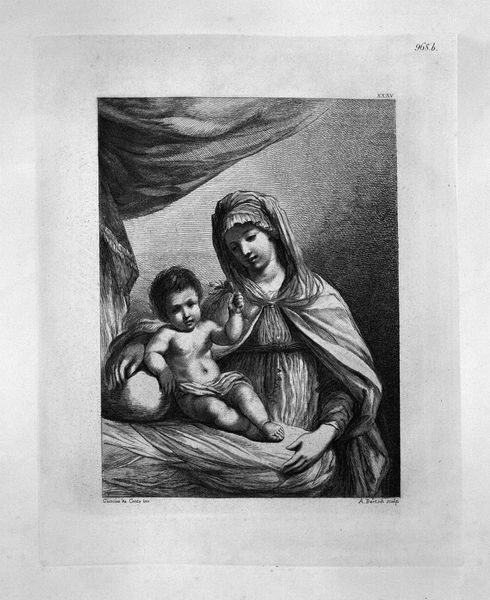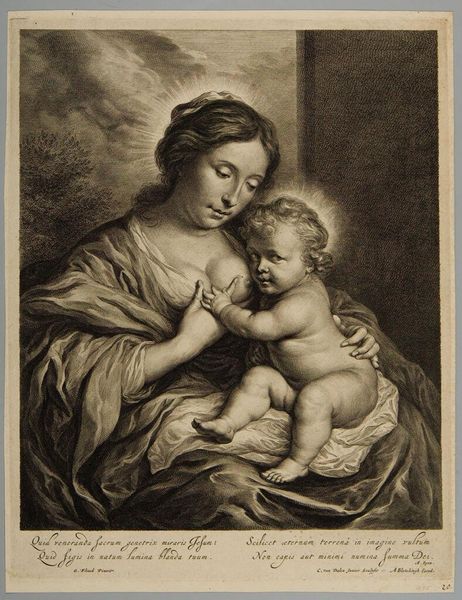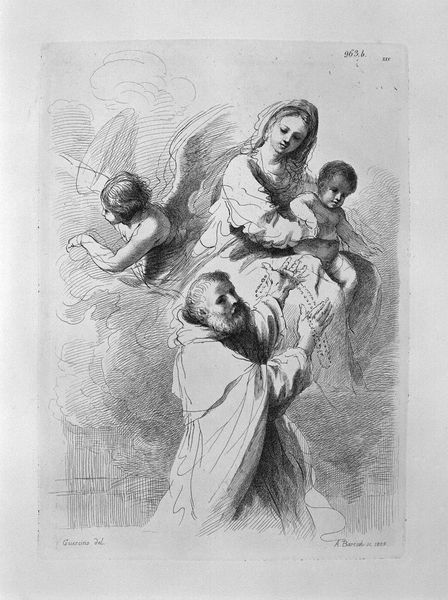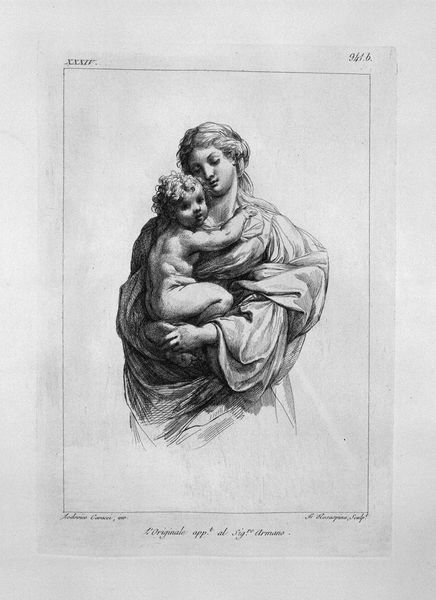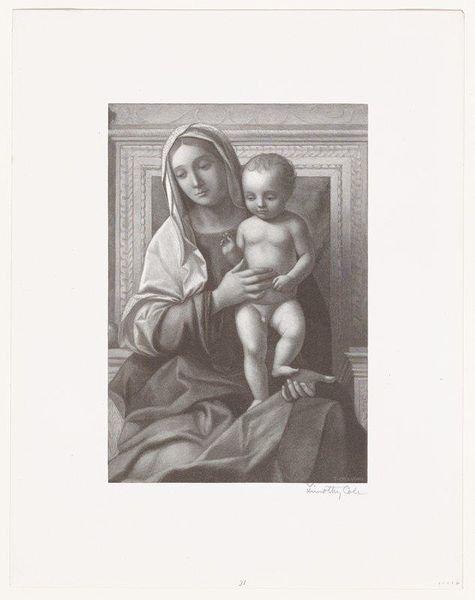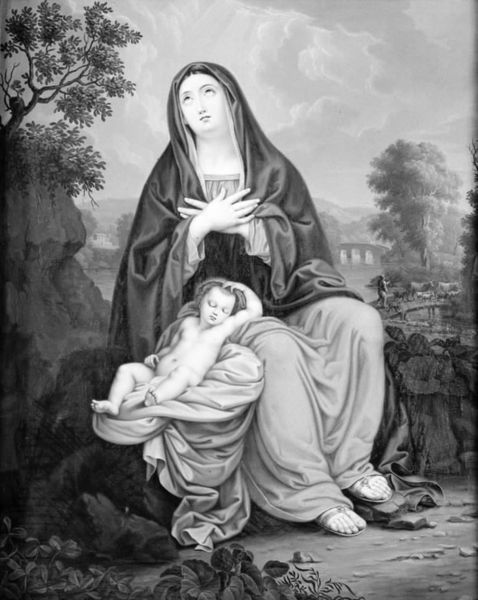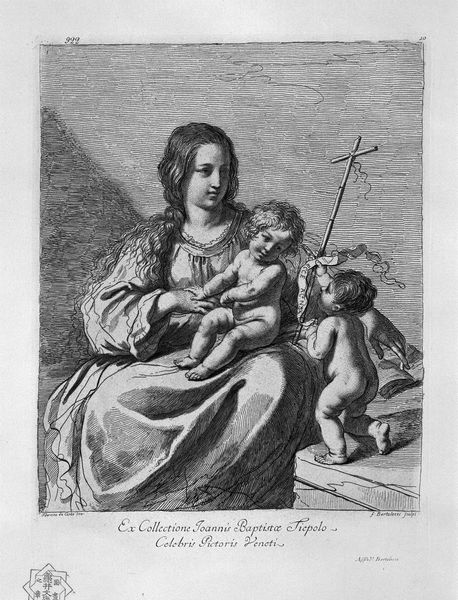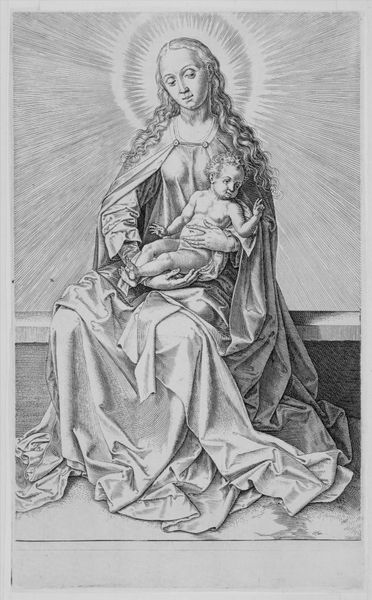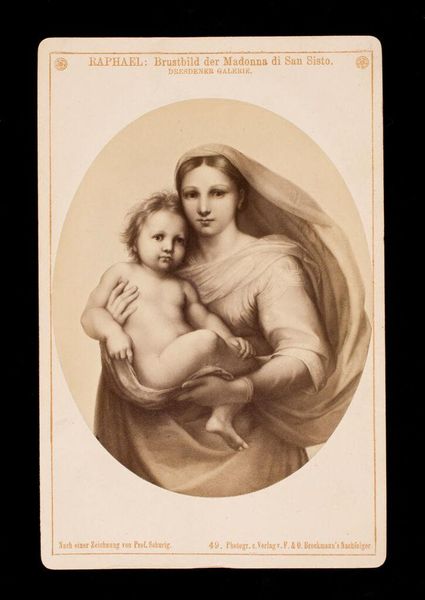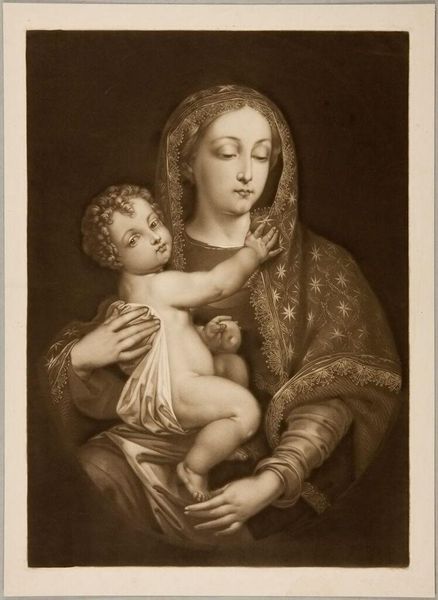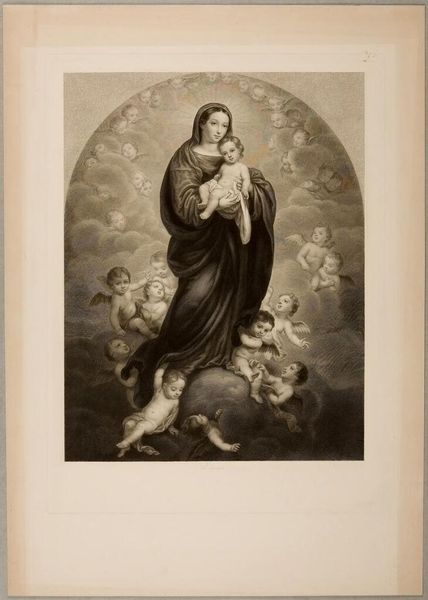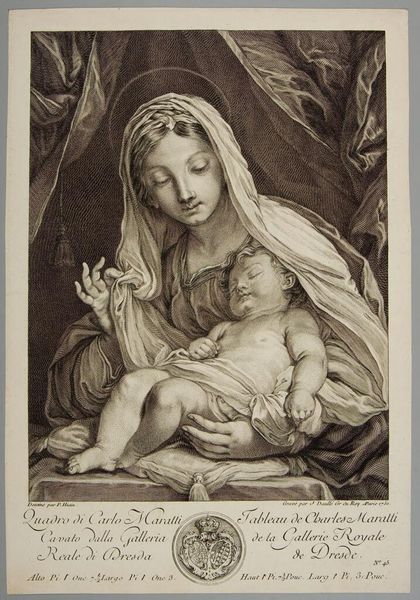
drawing, engraving
#
portrait
#
drawing
#
baroque
#
figuration
#
portrait reference
#
christianity
#
portrait drawing
#
history-painting
#
engraving
#
portrait art
Copyright: Public domain
Curator: Immediately, the eye is drawn to the Madonna's tenderness. Editor: Yes, and consider the textures rendered in this engraving – look at the heavy, folded fabric of her robes contrasting with the delicate skin of the Christ child. This is after “The Virgin and Child seated on the clouds of blessing, by Guercino”. I find the stark black and white rendering particularly effective here. Curator: The clouds are the visual key – they symbolize her ascent to heaven, an affirmation of her divine status and role as intercessor. The choice to place the Madonna and Child amongst these specific visual elements anchors the imagery to centuries of established doctrine. Editor: Absolutely, but it’s the craftsmanship of the engraving that I'm particularly struck by. Look at the line work. The engraver, who I believe is Giovanni Battista Piranesi, varied line thickness and density so masterfully in reproducing Guercino's original work. That, to me, is where so much meaning resides. It really emphasizes light and volume through purely technical means. How each of these lines interact allows us to see tone, weight, and texture that bring depth to an image with only one color to it. Curator: And note how the lines contribute to a very specific emotionality. The infant Jesus is not merely a baby, but a symbol of sacrifice. The somber gaze of Mary and the placement within the celestial clouds point to an acceptance of fate, even in infancy. Editor: I think it’s really exciting to analyze Piranesi's reproduction not just as a copy, but a work of art and craft in its own right. Engraving at the time this piece was created was about reproducibility to facilitate knowledge, wealth and social mobility by those who worked and handled the materials necessary. The Baroque and Christianity collide in this art. Curator: Indeed, recognizing these symbolic structures invites the viewer to partake in centuries of theological and artistic tradition. Understanding the established visual codes unlocks the narrative potential of such depictions. Editor: So by observing the materials that comprise the work we may examine what that work accomplishes. These prints like this are far more complex than the common use would have them be at face value. It has certainly broadened my appreciation for engravings and their ability to translate not just images but their tactile qualities. Curator: A profound dialogue emerges when analyzing not just subject matter, but the history that shapes it. It definitely enhances the appreciation.
Comments
No comments
Be the first to comment and join the conversation on the ultimate creative platform.
